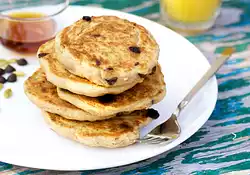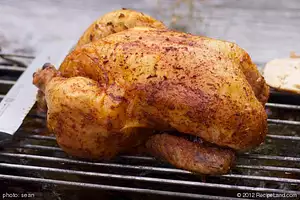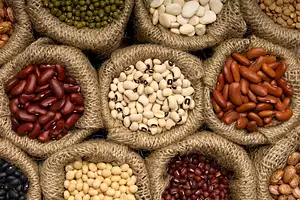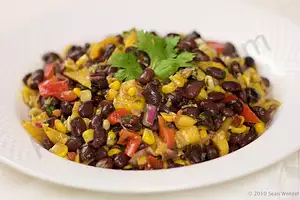Flour, self-rising
About the ingredient self-rising flour. Including 175 recipes with self-rising flour, nutrition data, and where to find it.
Contents
What is self-rising flour?
Self-rising flour is flour which has been blended with salt and baking powder, so that the flour comes with its own leavening. This type of flour is especially popular in the American South, where it is commonly used in biscuits, cakes, and various dessert items, but it can be found all over the world. Basically, the feature which distinguishes self-rising flour is the addition of leavening, which cuts a step out of food preparation.
Because self-rising flour is often used in pastries, it is typically lower in protein than other kinds of flours. This has an impact on the way the flour behaves. Foods made with self-rising flour tend to be lighter, fluffier, and more crumbly. This can be a disadvantage for breads, depending on the type of bread one is attempting to make. Some cooks swear by self-rising flour, arguing that it makes the tenderest, lightest baked goods.
If you have a recipe which requires self-rising flour and you don't have any around, you will need to add salt and baking powder to the recipe for it to turn out right. You may also see recipes which require self-rising cake flour, a low-protein, lightweight flour which has been mixed with leavening. You can use regular cake flour with added leavening as a substitute in these cases.
One thing to be aware of when using self-rising flour is that baking powder is activated as soon as it is exposed to moisture. This means that baked goods should be put in the oven as soon as possible after the wet and dry ingredients are mixed, because otherwise the food will rise outside the oven, and collapse when it gets inside. This is also a danger with any type of quick-leavened food made with baking soda or baking powder, so if you're been struggling with flattened cookies or sagging cakes, this may explain your problem.
Nutrition
Nutrition Facts
Serving Size 1 cup (125g)Where found
Self-rising flour is usually found in the baking supplies section or aisle of the grocery store or supermarket.
Food group
Flour, self-rising is a member of the Cereal Grains and Pasta US Department of Agriculture nutritional food group.
How much does self-rising flour weigh?
| Amount | Weight |
|---|---|
| 1 cup | 125 grams |
Related
Cereal Grains and Pasta
| In Chinese: | 面粉,自上升 | |
| British (UK) term: | ||
| en français: | la farine, l'auto-augmentation | |
| en español: | harina, con levadura |
Recipes using self-rising flour
There are 175 recipes that contain this ingredient.
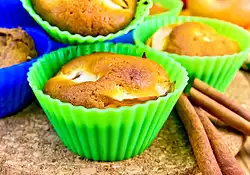
Reduced-Fat Apple Muffins
This apple muffins are rich in fibire and low-fat, they are fit for all!
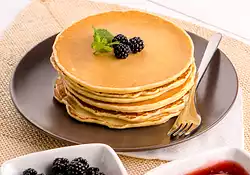
Breakfast Ricotta Pancakes
Breakfast Ricotta Pancakes recipe

Yummy Peanut Butter Brownies
Peanut Butter Brownies recipe
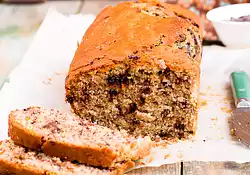
Best Orange Banana Quickbread
Orange Banana Quickbread recipe

Yummy Honey Pancakes
Honey Pancakes recipe
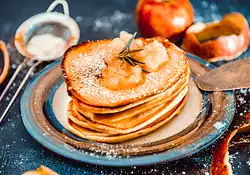
Bakestone Pancakes
Bakestone Pancakes recipe

Chocolate Raspberry Muffins
Chocolate Raspberry Muffins recipe

Yummy Boxty Pancakes
Yummy Boxty Pancakes recipe

Bread for Toast
Tasty, easily manipulated bread for making french toast, or just for having with your meal.
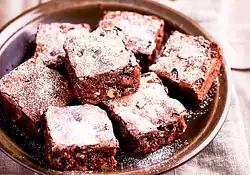
Mom's Choco-Mint Brownies
Choco-Mint Brownies recipe

Boozy date & Coffee Cake
Boozy date and Coffee Cake with Lime Buttercream Icing, Using Atholl Brose, a traditional Scottish Whisky liqeuer. Perfect with a cuppa' Joe :)

Cottage Pie!
So to start off with the first post, I decided to make a meal that screams of comfort food. Whilst it does take a bit of a while to get the meal done, once you take that first bite, heaven couldn’t seem closer if you were Adam trying to touch God’s finger in the “Creation of Adam” fresco created by Michaelangelo. The meal I speak of is Cottage Pie. There is much debate as to what exactly a cottage pie is and how it is different to a Shepherd’s pie...I don’t know. The dominant theory is that Sheperds pie uses lamb mince, whilst a cottage pie uses beef mince. I don’t know about you, but the term “Sheperds Pie” does not get my tastebuds going quite as well, so I prefer the term cottage pie. Besides, comparing the price of ground (mince) beef to ground lamb, a student would pick up the beef mince in a heartbeat without even so much as glancing at the lamb in the meat section. This cottage pie that I made is full of flavour, and just makes you want to cuddle up next to a fire and watch TCM movies all day either by yourself, or with a significant other. Here is the recipe:

Light Waffles
These waffles were super light just like the name. I made my own self-rising flour with whole wheat flour, and the waffles still came out light and fluffy. We had them with a homemade raspberry sauce and maple candied almonds. An excellent choice of breakfast.
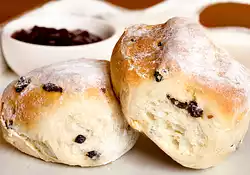
Mama's Easy Sourdough Biscuits
Mama's Easy Sourdough Biscuits recipe

Feather Biscuits
Feather Biscuits recipe
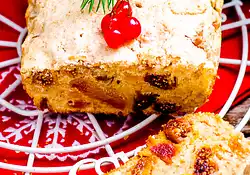
Creole Christmas Cake
This very rich cake from the West Indies is ideal for those who prefer not to ice their Christmas cakes.

Brandy Christmas Fruit Cake
Get the jump on your Christmas baking by making this classic fruit cake now. Wrap it well and it will be perfect to serve, or give as a gift, on Christmas Day!

Sheila's Mandarin Orange Cake
Sheila made this Mandarin Cake this morning to take to our Paella lunch with Spanish friends. They go crazy for it.

Southern Biscuits
Love these biscuits! The texture was just wonderful, so flakey. So much better than those store-bought ones. This will be my go-to recipe for making biscuits.
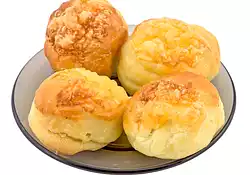
Easy Cheesy Biscuits
Cheese Biscuits recipe

Favourite Coca Cola Cake
Favourite Coca Cola Cake recipe
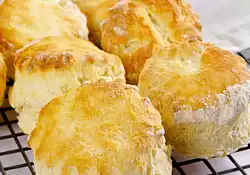
Bob's Sour Cream Biscuits
Bob's Sour Cream Biscuits recipe

Mini Lemon Curd Sponge Puddings
Lemony and buttery puddings is definitely a win in any occasion.

